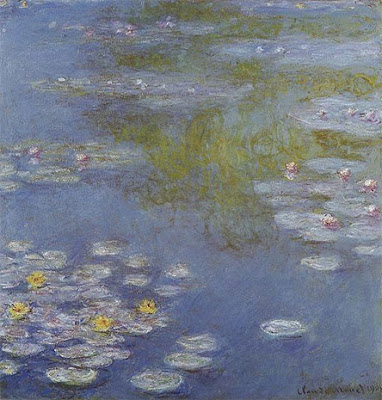
Banquet with Mince Pie, Willem Claesz Heda

Still Life with Peaches and a Silver Goblet, Jean Simeon Chardin

Vase of Flowers, Jan Davidsz de Heem
Each of these artists create texture in a different way. Jan Davidsz succeeds in creating texture by moving his brush in lively strokes to make the flowers look 3D. His use of shadows and shades make objects look flat (like the table) and shadows help make objects look in front of other objects. The different colors and shades of the same colors help make the picture look alive and make each flower distinct from the other flowers.
Chardin's use of white makes the painting have multiple illusions...from the fuzzy peaches...to the shiny goblet...to the bright grapes....and to the shadows on the walls. the colors mixed with white creates fuzz on the peaches and makes the painting look realistic. the mixing of the dark color for the goblet with the white makes the goblet look shiny.
Heda also uses a similar technique as Chardin. His use of shadow and white makes objects look realistic. The shadow on the table cloth uses a lot of white shades and grey-ish black shades. The white and black on the table cloth also distinctly shows the creases in the fabric and the folds -- giving the cloth a 3D and delicate look. Heda's use of value not only makes things look 3D and infront/behind other objects, but it makes light look like it is glistening off of the shiny objects.
















